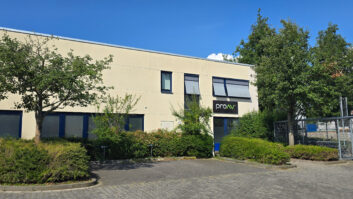 By Marc Bertasius, customer success manager at Microsoft and former Microsoft practice lead for Cinos
By Marc Bertasius, customer success manager at Microsoft and former Microsoft practice lead for Cinos
Over the last 18-months the monumental shift in the way we work has seen many organisations turning to remote and hybrid working models. This change has also meant the mass adoption of platforms such as Microsoft Teams.
There’s no denying how important Teams has been over the last year and the increase in users has been exponential. It was already a popular product with around 75 million daily users in April 2020. Fast forward to April of this year and that number reached 145 million. As of July 2021, Teams hit the 250 million monthly active users’ milestone.
More users, means more information and this has affected the data landscape, changing the sheer amount of information organisations have available to process and analyse. However, the consumerisation of IT has already been happening for some time and it can be argued that the pandemic has merely accelerated this.
MODERNISED PROCESSES
Microsoft Teams now sits at the centre of various business processes. From managing marketing campaigns to helping project teams co-author documents in real time and upload shared files. The volume of operational performance data that executives and business leaders now have access to has increased. Data drives evidence-based decisions but what kind of information can you extract from Microsoft Teams and what impact can analytics have on organisational performance?
Traditionally the responsibility for harnessing this data would have fallen on the shoulders of the IT department. But platforms like Microsoft Teams present a challenge as IT is no longer able to control the end-to-end infrastructure, as people can access it from different locations. Instead, the conversation becomes larger than just IT and increasingly organisations need to bring other departments such as facilities and HR into the picture.
As we move into a hybrid way of working, organisations are no longer necessarily in control of how their employees are working, where they’re working from or what they’re working on. That’s why it’s so important to have change managers, business decision managers and HR teams all brought into that conversation alongside the IT department. Going forward, flexibility is going to be important. Whatever platform you provide your workforce, employees will be accessing it from a much more diverse set of devices. So, organisations need to be ready to support increased levels of diversity.
WORKPLACE INTELLIGENCE
Making data readily accessible to these departments is an important change in how organisations typically interact with platforms such as Teams. For business leaders and heads of departments to have informed conversations they need to be able to access information about the workforce and business processes, otherwise the data just remains data and not intelligence that the organisations can act upon.
For example, HR departments can use the interactions and actions happening across Teams to inform insights into working habits and work-life balance. Things like analysing the number of hours employees were working before and after the organisation started operating remotely. While IT professionals can use the same data to reveal how the workforce is using the platform and whether it has been a good investment. Probing the data to reveal whether Teams meetings have helped to reduce phone bills, travel costs or perhaps contributed to a decrease in the usage of other applications.
But analytics shouldn’t make your employees feel like they are being watched. If this is the case, business leaders should take a step back from the technology and look at the culture of the organisation. Analytics shouldn’t make your workforce feel like they are being micromanaged.
While some executives have had challenges managing a disparate hybrid workforce, this is mainly because they don’t have the right trust in their employees for them to carry out their jobs. This speaks more about the culture of the organisation and less so about the technology that’s in place and being used.
Analysing user behaviour goes hand in hand with adoption of any tool that changes the way people work in the organisation. To make platforms like Microsoft Teams work successfully it’s important to bring groups such as HR and facilities management together and into that conversation. Having insights into what’s happening on the ground can enable leaders to quickly respond to change, recover from any disruption to their processes and take advantage of any necessary strategic opportunities to ensure the future success of the organisation.







